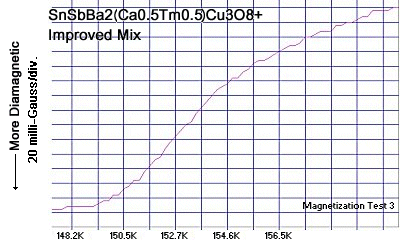
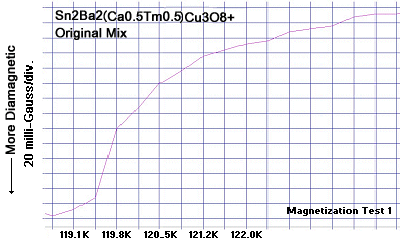


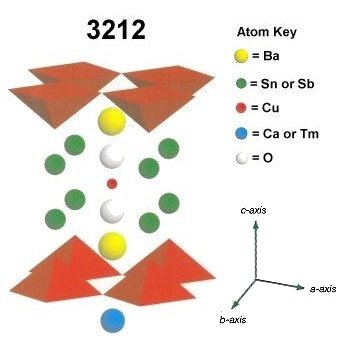
|
A superconductor discovered some 20 years ago turned out to be an ideal testbed for confirmation of a correlation between Kappa and Tc. Above right, in a plot of Sn2Ba2(Ca0.5Tm0.5)Cu3O8+, there are tin atoms in the insulating cation layers of the 3212 structure. Tin-oxide (SnO) nanowire has a Kappa of only 2.3. But, when alloyed with antimony, SnSb has a Kappa of 147 — more than 63 times as great. Additionally, tin and antimony have nearly identical ionic radii that should allow them to occupy the same atomic sites. This makes a 50-50 mix of tin and antimony suitable for boosting the sub-structure Kappa of this material without radically altering the planar-weight-ratio (PWR) — which has also been found to promote Tc.
The above right magnetization test shows diamagnetic (Meissner) transitions reaching minimum at 118 Kelvin in the original Sn2-3212 formulation. Above left, the transition in the improved SnSb-3212 upgrade reaches minimum near 147 Kelvin - an increase in Tc of 29 degrees. Both formulations show a diamagnetic shift greater than 250 milliGauss. The gradual slope of the SnSb transition suggests the cation layers are now over-doped with electrons and has resulted in a weaker phase. The below resistance test was performed to confirm superconductivity is still present. While the quiescent noise level increased, there is an unmistakable resistance drop near 147K. 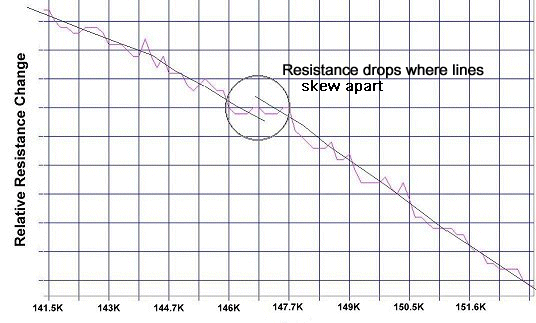
|
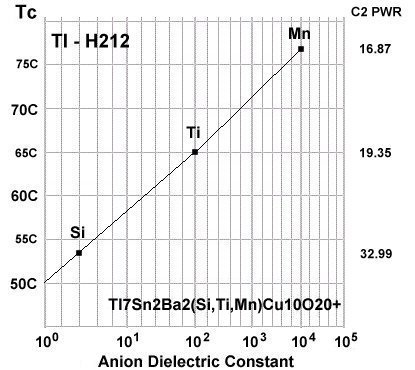
The chemical precursors were mixed thoroughly and pelletized. Since antimony-oxide has such a low melting point, the mix was pre-sintered for 12 hours at 640C. Then the pellet was calcined at 770C for 2 hours and sintered overnight at 880C. Lastly, it was annealed for 10+ hours at 500C in flowing O2. Testing temperatures were determined using an Omega type "T" thermocouple. The magnetometer employed a single Honeywell SS94A1F Hall-effect sensor with a sensitivity of 25 mv/Gauss operating within an ambient magnetic field of 550 - 600 milliGauss
*One of the 2 Hall Effect sensors in the magnetometer was found to be malfunctioning in the original tests. Subsequent tests were performed using a single sensor. Though the data plots changed, the results are the same: There is an unambiguous correlation between dielectric constant and superconductor Tc.RESEARCH NOTE: The copper-oxides are strongly hygroscopic. All tests should be performed immediately after annealing.
E. Joe Eck
© 2025 Superconductors.ORG
All rights reserved.
 BACK to "News" page at Superconductors.ORG
BACK to "News" page at Superconductors.ORG